As travelers consider the 5-day Annapurna Base Camp trek from Pokhara, they find themselves drawn to the allure of the Himalayas and the promise of stunning vistas. This trek offers a blend of moderate challenge and rich cultural experiences, making it accessible for a variety of adventurers. With guided tours and cozy accommodations, trekkers can focus on the journey ahead. However, understanding the nuances of the trek, from what to pack to the best seasons for a visit, can significantly enhance the experience. What essential tips should one keep in mind before setting off on this unforgettable adventure?
Key Points
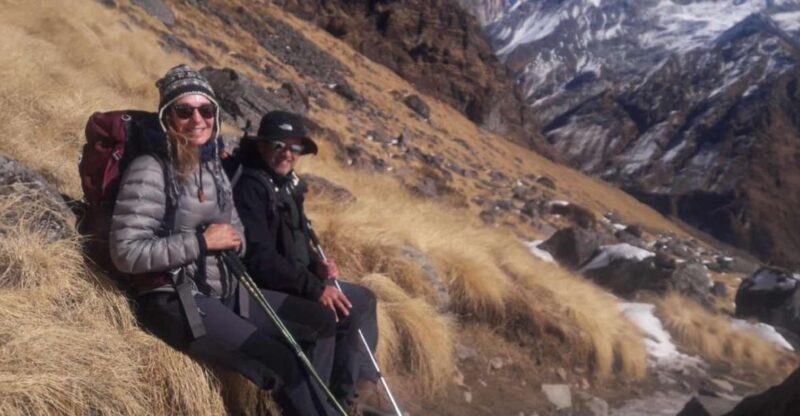
- The Annapurna Base Camp trek from Pokhara lasts 5 days, reaching an altitude of 4,130 meters (13,550 feet).
- The trek features diverse terrains, including lush forests, terraced fields, and stunning Himalayan landscapes.
- Best trekking seasons are spring (March to May) and autumn (September to November) for optimal weather and views.
- The package includes guided tours, accommodations, and necessary permits, ensuring a hassle-free experience.
- Trekking is moderate in difficulty, suitable for both beginners and experienced trekkers, with safety measures in place.
Trek Overview and Highlights
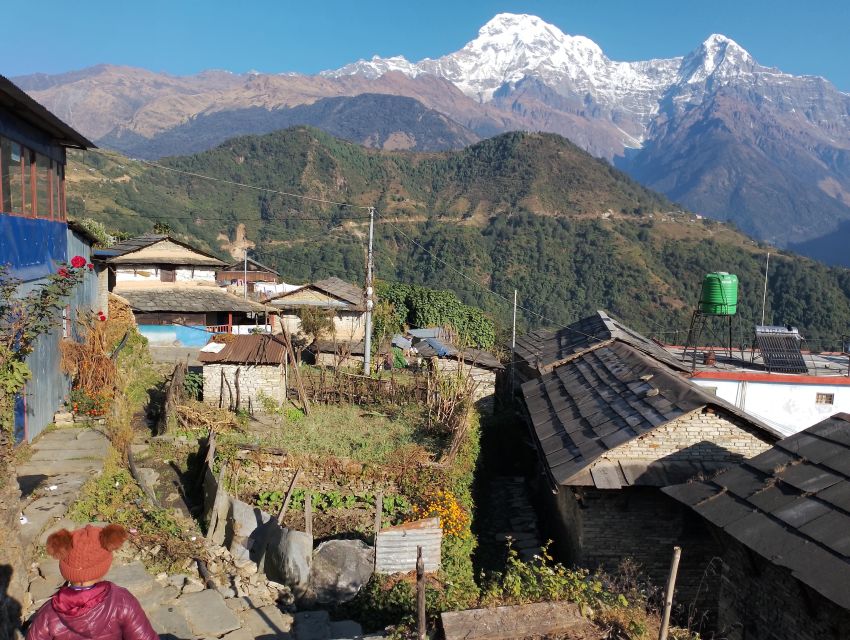
The Annapurna Base Camp trek offers an unforgettable Himalayan adventure, showcasing breathtaking landscapes and iconic peaks along a rewarding 5-day journey.
Trekkers experience diverse terrains, from lush forests and terraced fields to stunning alpine meadows. As they ascend to an altitude of 4,130 meters (13,550 feet), they’ll be greeted with panoramic views of majestic peaks like Annapurna and Machapuchare.
This trek’s moderate difficulty makes it accessible for a wide range of adventurers, whether they’re seasoned trekkers or beginners. The best seasons to visit are spring (March to May) and autumn (September to November), ensuring clear skies and optimal views.
Each day brings new sights and experiences, making it a truly remarkable trek in the heart of the Himalayas.
You can also read our reviews of more hiking tours in Ghandruk
Detailed Itinerary
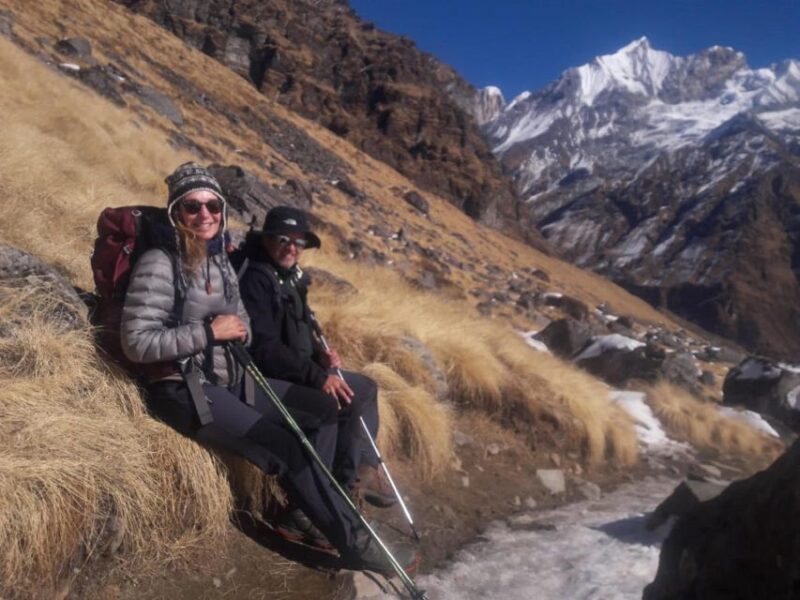
On Day 1, trekkers start their adventure in Pokhara and make their way to Chhomrong, experiencing a mix of scenic drives and invigorating treks along the way. After a drive to Sewai, they’ll trek to Jhinu Dada, where they can relax before ascending to Chhomrong.
On Day 2, it’s a descent to a suspension bridge, followed by an ascent through bamboo and rhododendron forests to Himalaya.
Day 3 brings a challenging trek to Annapurna Base Camp, with a lunch stop at Machapuchare Base Camp.
The fourth day starts with an early sunrise at ABC, then they trek back to Sinuwa.
Inclusions and Services
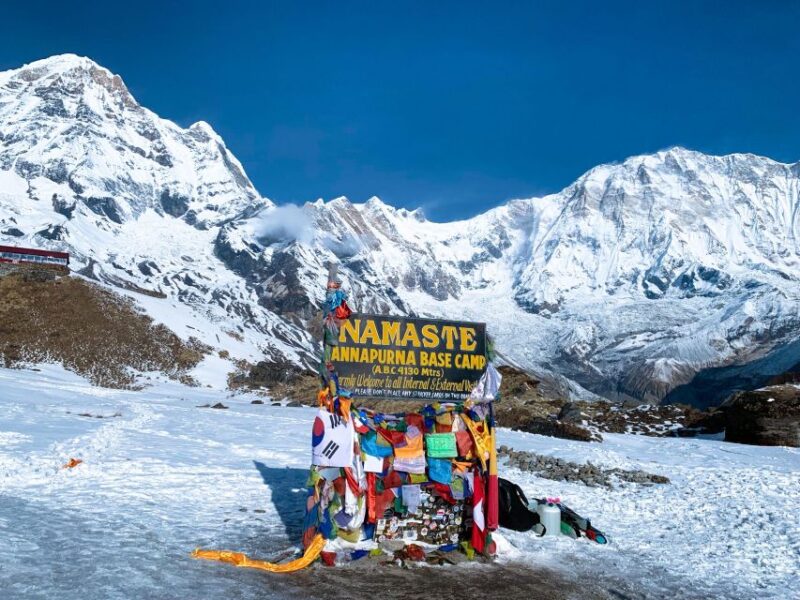
Wondering what’s included in the Annapurna Base Camp trek? Trekkers can expect a comprehensive package that covers everything from hotel pickups to guided tours and essential permits.
This trek includes a convenient jeep transfer from Pokhara to Sewai and back, ensuring a hassle-free start and finish.
Travelers benefit from the expertise of a friendly, English-speaking trekking guide who’ll navigate the route and manage necessary permits.
Accommodation is provided in cozy guesthouses along the way, making the experience comfortable.
An emergency first aid kit and trekking poles are supplied for safety and convenience.
Food and drinks are available for purchase, while optional porter services can be arranged to assist with personal belongings.
Gratuities are at your discretion.
Important Information
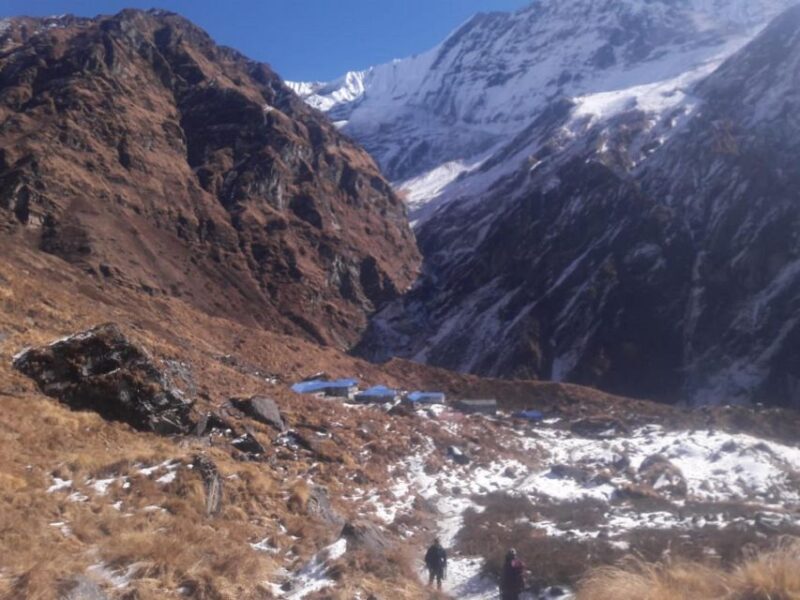
Preparing for the Annapurna Base Camp trek involves understanding key information to ensure a safe and enjoyable experience.
Trekkers should note that the cancellation policy allows for free cancellation up to 24 hours in advance for a full refund, which offers peace of mind.
It’s crucial to recognize that this trek isn’t suitable for pregnant women or wheelchair users due to the challenging terrain.
Weather conditions can change rapidly, so preparing for varying temperatures and potential rain is essential.
Trekkers should also consider personal safety by ensuring they’ve travel insurance that covers emergency rescue.
Keeping these points in mind will help trekkers have a memorable adventure while minimizing potential challenges along the way.
More Great Tours NearbyWhat to Bring
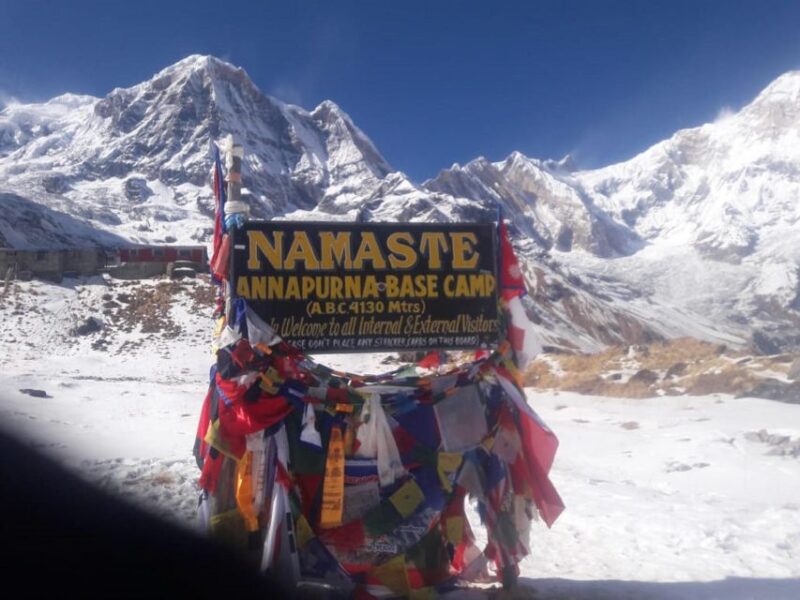
What essential items should trekkers pack for the Annapurna Base Camp trek to ensure they stay comfortable and safe? A well-prepared pack can make all the difference. Here’s a quick guide:
| Essential Items | Description |
|---|---|
| Comfortable Shoes | Sturdy trekking boots are a must. |
| Warm Clothing | Layered attire for varying temps. |
| Personal Identification | Passport or ID is required. |
| First Aid Kit | Basic supplies for emergencies. |
Plus, trekkers should consider a water bottle, snacks, and trekking poles for extra support. Packing wisely helps ensure an enjoyable trek, allowing trekkers to focus on the breathtaking scenery and unforgettable experience.
You can also read our reviews of more tours and experiences in Ghandruk
Trekking Difficulty and Tips
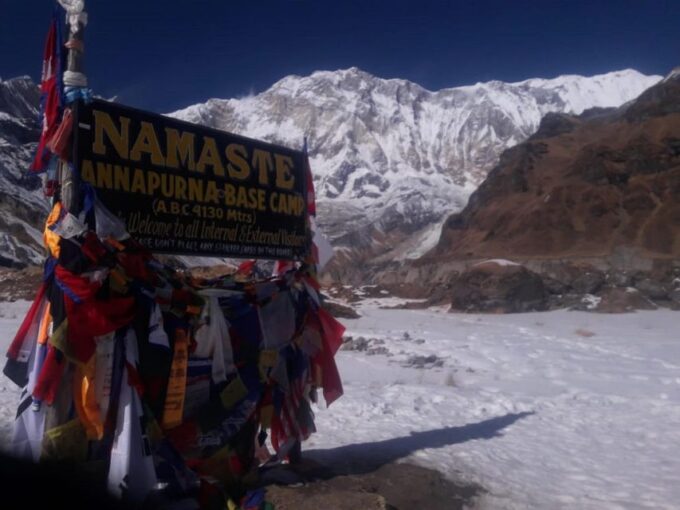
The Annapurna Base Camp trek presents a moderate challenge, making it accessible for a wide range of trekkers, but it’s essential to be well-prepared for the varying terrain and altitude changes.
Trekkers should focus on gradually acclimatizing to higher altitudes and maintaining a steady pace to avoid fatigue. Staying hydrated is crucial, so they should drink plenty of water throughout the trek.
It’s also wise to pack snacks for energy boosts during long stretches. Weather can shift rapidly, so layering clothing is recommended.
Trekkers should embrace the experience, take breaks to enjoy the breathtaking views, and listen to their bodies.
It’s all about balancing effort with enjoyment in this stunning Himalayan adventure.
Best Seasons for Trekking
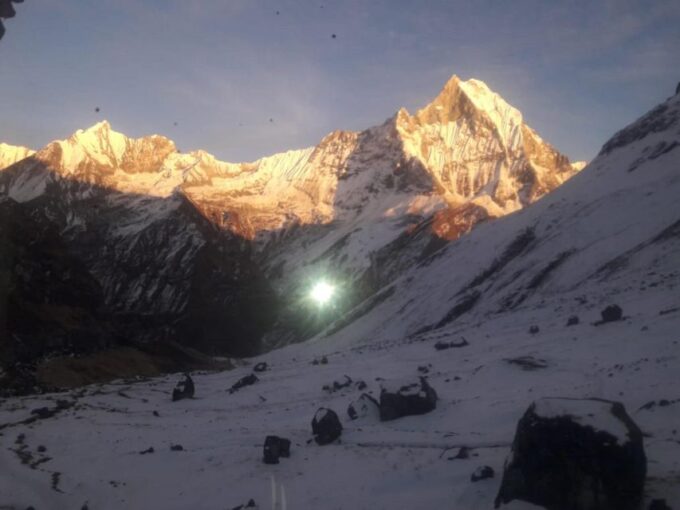
Spring and autumn are the prime seasons for trekking to Annapurna Base Camp, offering trekkers the best chances for clear skies and stunning mountain views. During these times, the weather is generally mild, and the trails are less crowded, making it a perfect opportunity for nature lovers.
| Season | Conditions | Highlights |
|---|---|---|
| Spring | Mild temperatures, blooming rhododendrons | Vibrant landscapes, clearer views |
| Autumn | Cooler temperatures, stable weather | Stunning foliage, excellent visibility |
| Monsoon | Heavy rains, slippery trails | Less recommended, potential landslides |
For those planning their trek, choosing either spring (March to May) or autumn (September to November) ensures the best experience on this iconic journey.
Local Culture and Etiquette
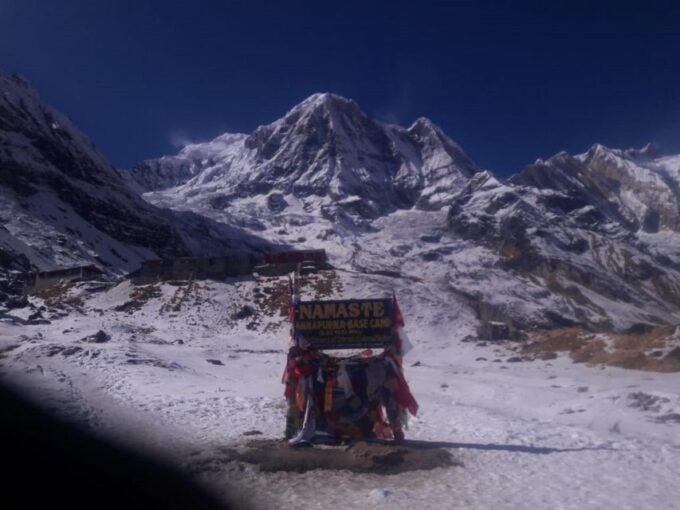
Understanding local culture and etiquette is crucial for trekkers wanting to connect with the vibrant communities along the Annapurna Base Camp trail.
Respect is paramount; always greet locals with a smile and a “Namaste.” When visiting homes or temples, trekkers should remove their shoes and cover their shoulders and knees.
It’s also polite to ask before taking photos of people or their property. Sharing food is common, so if offered, it’s best to accept, as refusing can be seen as rude.
Trekkers should be mindful of local customs and traditions, especially during festivals. Lastly, tipping guides and porters is appreciated, reflecting gratitude for their hard work.
Embracing these practices enriches the trekking experience while fostering goodwill.
Frequently Asked Questions
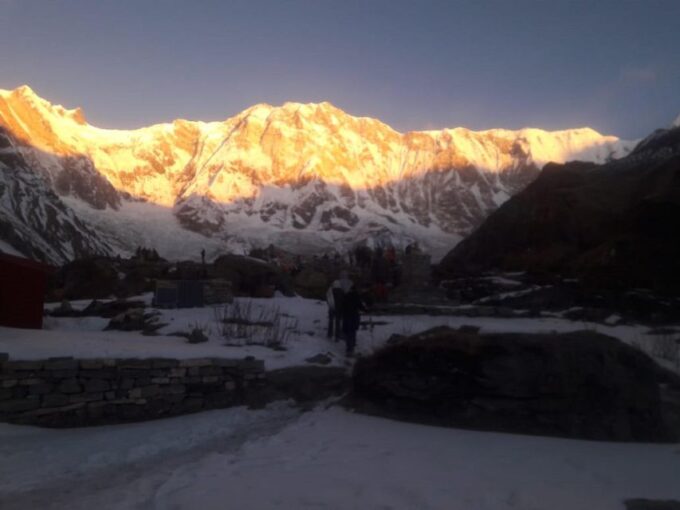
What Are the Average Temperatures During the Trek?
During the trek, temperatures typically range from 5°C to 15°C (41°F to 59°F) at lower altitudes, while it can drop to -5°C (23°F) at Annapurna Base Camp. Trekkers should dress in layers to stay comfortable.
Are There Any Age Restrictions for Participants?
There aren’t strict age restrictions for participants. However, trekkers should be reasonably fit and capable of handling moderate difficulty levels. It’s best for younger children or older adults to consult a doctor before embarking on the trek.
Is There Mobile Network Coverage Along the Trek?
Along the trek, there’s limited mobile network coverage. Some areas provide decent connectivity, but it’s best not to rely on it entirely. Trekkers should enjoy the experience without distractions from their devices.
Can I Arrange for a Porter On-Site?
Yes, trekkers can arrange for a porter on-site. They’ll find local services available, and hiring a porter can ease the trek, allowing for a more enjoyable experience without the burden of heavy luggage.
How Do I Handle Altitude Sickness During the Trek?
To handle altitude sickness during the trek, he should ascend gradually, stay hydrated, and recognize symptoms early. Taking breaks, eating light meals, and considering altitude medication can also help prevent or alleviate discomfort.
Recap
To sum it up, the 5-day Annapurna Base Camp trek from Pokhara offers an incredible blend of natural beauty, culture, and adventure.
Whether you’re a first-time trekker or a seasoned pro, this journey promises unforgettable experiences at every turn.
With stunning landscapes, cozy guesthouses, and the chance to connect with fellow adventurers, it’s a trek that shouldn’t be missed.
So lace up those hiking boots and get ready for an adventure of a lifetime in the heart of the Himalayas!
You can check availability for your dates here:More 5-Day Experiences in Ghandruk
More Hiking & Trekking Tours in Ghandruk
More Tour Reviews in Ghandruk
Not for you? Here's more nearby things to do in Ghandruk we have reviewed
- From Kathmandu: Annapurna Base Camp 7-Day Trek
- Sweet and Memorable 4 Day Poon Hill Trek
- Pokhara: 3 days Trek to Poon hill
- From Pokhara: 4-Day Trek to Kapuche Glacier Lake
- Pokhara: 5-Days Annapurna Base Camp Trek Guided Adventure
- From Pokhara: 6 Day Annapurna Base Camp Amazing Trek
- From Pokhara : 3 Days Mardi Himal Natura Explore Trek
- Top Things To Do at Pokhara: Hike to Australian Base Camp
- Pokhara: 7-Day Annapurna Base Camp & Jhinu Hot Springs Trek
- Short Annapurna Circuit Trek – 6 Days
- Annapurna Base Camp Helicopter Tour
- From Pokhara: A 7-Day Trek to the Heart of the Himalayas
